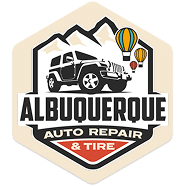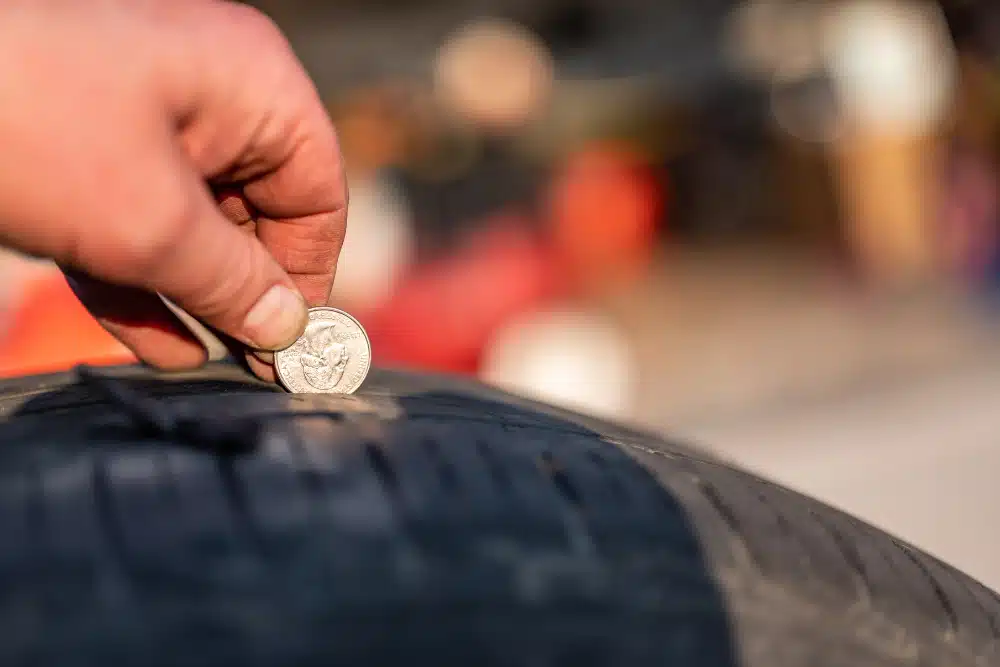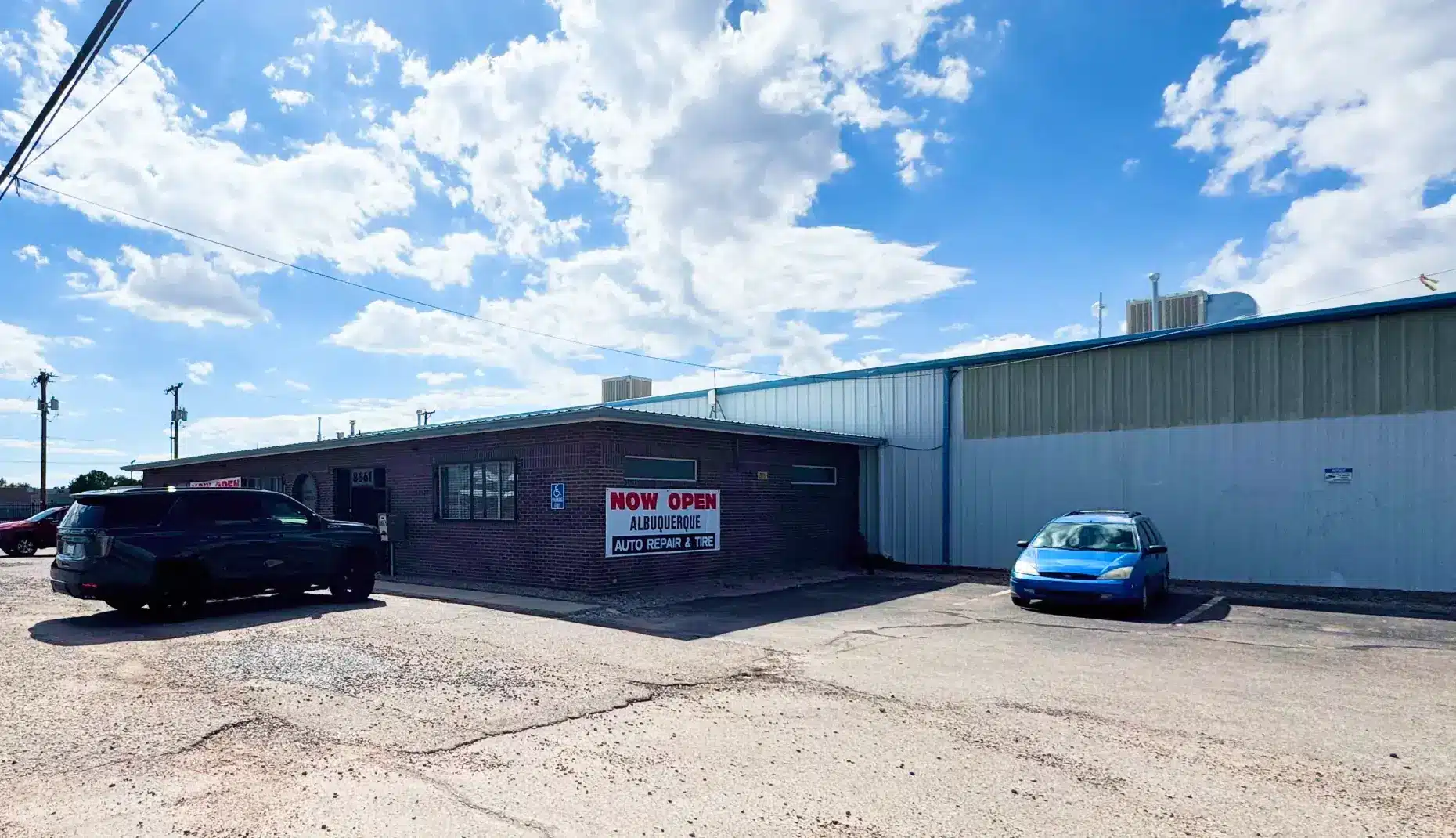You need at least 4/32” of tread to drive safely, even though the law only requires 2/32”. At Albuquerque Auto Repair and Tire, we help local drivers understand why that extra tread makes all the difference, whether you are cruising desert highways, navigating sudden rainstorms, or climbing the winding roads into the Sandias.
In this article, we’ll cover what tire tread depth really means, how to measure it with simple at-home tests, and when replacement becomes necessary. You’ll also find a practical tire tread wear guide, insights into how New Mexico’s climate accelerates tire wear, and tips for extending tire life. Along the way, we’ll show how our team keeps Albuquerque drivers rolling safely and confidently every mile of the journey.
Tread Depth and Safety: The Connection Every Driver Should Know
Tread depth is what allows your tires to grip the road. It channels away water, gives traction in snow or gravel, and stabilizes your vehicle in curves and sudden stops. Without it, your tires essentially turn into slick rubber discs.
For Albuquerque drivers, tread depth plays an even bigger role because of:
- Heat and dry roads: Hot pavement accelerates wear and makes bald tires more prone to blowouts.
- Sudden rainstorms: Hydroplaning becomes a real risk when shallow tread cannot push water aside.
- Mountain terrain: Trips to the Sandias or Taos require deeper tread to maintain traction on steep grades.
The lesson? Minimum tread depth may be legal, but it is not always safe.
What is the Safe Tire Tread Depth?
The legal minimum in the U.S. is 2/32 of an inch, but experts recommend more for real-world safety:
- 2/32”: Legal limit, but unsafe in wet or slippery conditions
- 3/32–4/32”: Still usable, but braking distances increase significantly
- 5/32”+: Recommended if you drive in rain, snow, or mountain areas
- 8/32”+: Standard for new tires
Even a single 32nd of an inch can make a major difference in how your vehicle handles.
The Tire Tread Wear Replacement Guide
Here is a quick reference table you can use:
| Tread Depth | Road Condition Safety | Recommended Action |
| 8/32”+ | Like-new performance | Routine maintenance |
| 6/32–7/32” | Safe for most driving | Monitor regularly |
| 4/32–5/32” | Risk in wet/mountain roads | Replace soon |
| 2/32–3/32” | Unsafe & illegal in many states | Replace immediately |
This simple tire tread wear replacement guide will help you anticipate replacements before they become emergencies.
Schedule a tread inspection at Albuquerque Auto Repair and Tire if you are unsure where your tires stand today.
How to Check Tire Tread at Home
You do not need special equipment to monitor tread. Try these quick tests:
1. The Penny Test
- Insert a penny with Lincoln’s head facing down.
- If you can see the top of his head, the tread is below 2/32” and unsafe.
2. The Quarter Test
- Use a quarter with Washington’s head down.
- If the top of his head is visible, tread is below 4/32”, and replacement should be planned.
3. Built-in Wear Bars
- Look for small raised rubber bars across the grooves.
- If the tread is level with these bars, the tires are worn out.
Checking at home is a smart first step, but professional inspections are more accurate and can also spot uneven wear or hidden damage.
The Science of Tread Depth: What the Numbers Really Mean
This is where it gets interesting. Tire engineers design tread depth with performance physics in mind:
- Water evacuation: At 2/32”, a tire can move less than half the water compared to a new tire, making hydroplaning more likely.
- Braking distance: Studies show stopping distance on wet pavement nearly doubles once tread reaches 3/32”.
- Cornering stability: Shallow tread loses grip in sharp turns, especially in mountain driving.
- Heat buildup: Less tread means thinner rubber, which heats up faster and increases blowout risk.
In short, tread depth directly affects how your tires perform in emergencies. Even if you rarely think about physics on your daily commute, it is always at play beneath your wheels.
What Happens If You Wait Too Long?
Many drivers delay buying new tires because they want to stretch the investment. Unfortunately, waiting too long often costs more in the long run. Risks include:
- Sudden blowouts on hot Albuquerque highways
- Increased fuel consumption from uneven wear
- Extra strain on your suspension and steering components
- Higher likelihood of collisions due to longer stopping distances
Replacing tires at the right time is not just about safety; it is also about saving money and preventing bigger repairs.
Finding the Perfect Fit: Selecting New Tires for Your Albuquerque Vehicle
Once you decide replacement is necessary, the next step is choosing the right tires. Albuquerque’s unique driving mix calls for versatile, reliable options. At Albuquerque Auto Repair and Tire, we help customers match tires to their lifestyle:
- All-season tires: A dependable choice for everyday commuters
- All-terrain tires: Perfect for outdoor enthusiasts heading into the mountains
- Diesel and truck tires: Built tough for towing, hauling, or work vehicles
- Performance tires: Designed for sharper handling and sporty rides
We do not just sell tires. We help drivers find the best fit for their vehicle and daily routine.
Albuquerque Auto Repair and Tire: Our Commitment to Safer Driving
Unlike chain shops that rush through jobs, our team focuses on quality and precision. Customers choose us because:
- Attention to Detail: Every tire install, balance, and rotation is completed with care to ensure long-lasting performance.
- Local Road Expertise: From summer heat to sudden monsoon storms, we understand the conditions that wear tires faster in Albuquerque.
- Comprehensive Tire Care: Beyond sales, we provide inspections, alignments, and preventative maintenance to help extend the life of your tires.
- Integrity in Service: We provide honest recommendations so you only replace tires when it is truly necessary.
- Warranty Protection: All qualifying repairs and tire-related services are backed by our 3-year/36,000-mile warranty for peace of mind.
Explore our full range of tire solutions on our Tire Services page to see how we can keep you driving safely and confidently.
Preventative Maintenance That Extends Tire Life
Replacing tires is important, but maintenance can help you get more miles out of each set. Here are the key steps we recommend:
- Rotate tires every 5,000 to 7,000 miles
- Check air pressure monthly to avoid uneven wear
- Schedule alignments to keep your steering straight and tread wearing evenly
- Balance tires to reduce vibration and protect your suspension
These simple habits extend tire life and ensure you get the most from your investment.
Frequently Asked Questions About Tire Tread Depth
What is a good tread depth for tires?
A good tread depth for tires is 6/32” or deeper, which provides safe traction in most driving conditions. For wet or snowy roads, anything under 5/32” can reduce performance. Drivers in Albuquerque should aim for deeper tread due to sudden rain and mountain driving.
At what tread depth should tires be replaced?
Tires should be replaced when the tread reaches 2/32”, which is the legal minimum in most states. However, experts recommend replacing at 4/32” for wet roads and 5/32” for snow or mountain driving to maintain proper safety margins.
How do I measure tire tread with a penny?
To measure tire tread with a penny, insert it into the tread groove with Lincoln’s head upside down. If you can see all of his head, your tread is below 2/32” and the tires should be replaced. This is a quick, simple way to check tread at home.
Why is tire tread important for safety?
Tire tread is important for safety because it provides traction, channels water, and reduces stopping distances. Without enough tread, vehicles are more likely to hydroplane, skid in turns, or experience blowouts, especially in rain or hot weather.
How does New Mexico’s climate affect tire wear?
New Mexico’s hot, dry climate accelerates tire wear by increasing heat buildup and drying out rubber. Sudden rainstorms can also expose shallow tread weaknesses, leading to hydroplaning. Drivers who frequent mountain roads may notice even faster wear due to added stress on tires.
Safe Tire Tread Depth and Tire Replacement in Albuquerque, NM
Driving legally does not always mean driving safely. While a 2/32” tread may pass the bare minimum, it leaves you vulnerable to hydroplaning, blowouts, and poor traction. For Albuquerque drivers, the smart choice is replacing tires at 4/32” or 5/32” for real-world safety in rain, heat, and mountain terrain. At Albuquerque Auto Repair and Tire, we help you make informed decisions so you never have to second-guess your tread.
If you are unsure about your tire condition, come see us at 8661 San Pedro Drive NE, Albuquerque, NM 87113, or call 505-317-4232. Prefer convenience? Request your appointment online. From inspections to replacements, our experts will give you a clear picture of your tire health and the confidence to drive forward.
Do not wait until worn tires put you at risk. Let us help you keep Albuquerque rolling right.


